Toronto Blue Jays: Top 5 unsigned draft picks since 2010

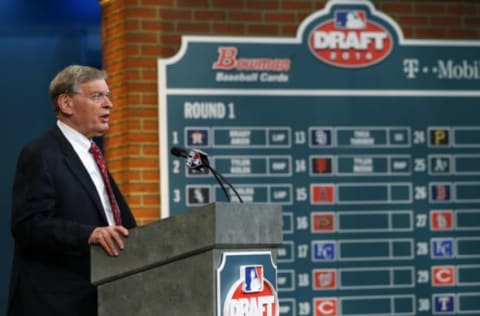
While it’s common for prospects to get drafted and still choose to go to college, Blue Jays fans can dream of a “what if” scenario with these players who were originally selected by Toronto.
The first thing you must understand before reading this, especially as a Jays fan, is that all five of these players were drafted by the Blue Jays out of high school, which means the team must offer them enough money to lure them away from the top colleges in America. This allows players to typically develop at top D1 schools for three years before entering the draft again, much more polished, and thus being drafted higher and receiving a bigger cheque.
Many high school picks beyond the first several rounds don’t sign, and even first rounders aren’t guaranteed as three of the top 30 selections in last years’ draft didn’t sign. Even Brady Aiken, the first-overall pick in 2014 went unsigned by the Houston Astros.
You can applaud the Jays scouting staff for seeing the potential in these 17-18 year-olds when they drafted them. But you can also sit back and think about what could have been had the Blue Jays had some of these young stars ready to blossom into their lineup around the time they were slugging their way to back-to-back ALCS appearances in 2015 and 2016.
Teams obviously kick themselves when a draft pick heads off to school and comes back as a first-rounder, but they kick themselves even more when one of those first rounders becomes an MVP at the age of 24 or and another becomes Cy Young finalist at the age of 25.
Unfortunately for the Blue Jays, they were just a signature away from owning both of those players.
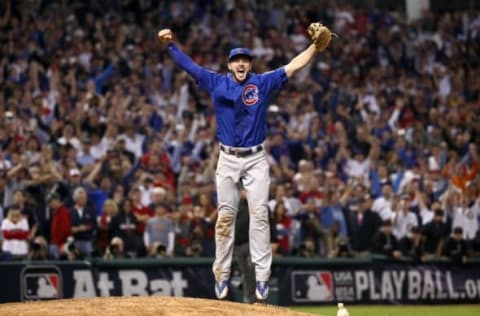
Kris Bryant, 27 years old
Drafted by Blue Jays: 2010 18th-round selection (546th overall)
Second Draft (as Junior): 2013 1st-round selection (2nd overall) by Chicago Cubs
The biggest star on this list, the Jays drafted Kris Bryant in 2010 out of Bonanza High School in Las Vegas. At the time, he stood at 6-foot-5, 205-pounds and didn’t really receive the praise you’d expect from a future MVP.
MLB.com’s report on him heading into the draft said the following:
“A home run streak helped him this spring, but overall he does not receive high grades for his hitting ability. He’s below average defensively, so a move to first could be in his future.”
Bryant already had a strong commitment to the University of San Diego (USD) and the Blue Jays had already spent a club record in bonuses, signing the likes of Aaron Sanchez, Noah Syndergaard, Sam Dyson, Dalton Pompey and other early round choices, leaving no money for Bryant, according to Shi Davidi.
Bryant then went on to become a star at USD hitting 54 homers, 155 RBI, .486 OBP and an OPS of 1.188 over 155 games in his three seasons with the Toreros. He was named a First Team All-American by Baseball America as a sophomore and was named to the US Collegiate National Team. His junior and final year, he broke the record for most home runs in a college season since the league switched to BBCOR composite bats, and took home the two major awards for college player of the year: the Golden Spikes Award, and the Dick Howser Trophy.
The Cubs drafted Bryant second-overall in 2013 and he quickly became one of the most highly regarded prospects in baseball due to his raw power. Once joining the big leagues it didn’t take long for him to establish himself as an elite player, becoming an All-Star and winning NL Rookie of the Year in 2015. He may never be able to top his second season though, as he was an All-Star again, the NL MVP, and ended the Cubs curse winning their first World Series title since 1908, even making the play for the final out.
Seeing him rack up all of these accolades in just his first two seasons may have Jays fans upset for not signing him, but how about this stat. Since entering the league four seasons ago, Bryant’s WAR of 23.1 is fourth best in the majors among position players behind only Mike Trout, Mookie Betts and Jose Altuve.
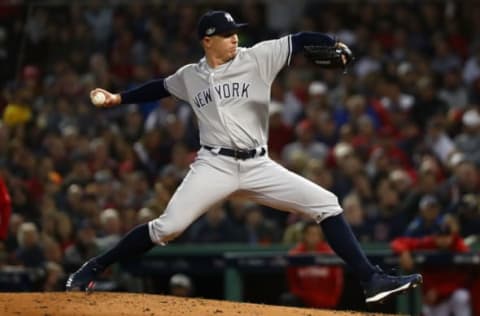
Chad Green, 25 years old
Drafted by Blue Jays: 2010 37th-round selection (1116 overall)
Second Draft (as Junior): 2013 11th-round selection (336 overall) by the Tigers
Chad Green was drafted the same year as Bryant, and if they didn’t have money to lure the 18th rounder from USD, they surely didn’t have money to convince Green, the 37th-rounder, to forego one of the better programs in America, the University of Louisville.
For a team that has struggled to find an identity from its bullpen over the years, they missed a gem in Green and to make matters worse, the Jays are reminded of that every time they play their long-time division rival, New York Yankees. In 93 at-bats against Green throughout his career, the Blue Jays are 14-for-93 (.151) with 37 strikeouts and 0 walks.
After the Blue Jays failed to sign Green, he went on to have a solid three years with the Louisville Cardinals, earning a spot in the 2013 College World Series (CWS) and departed the school holding the record for lowest career ERA.
Despite his track record at Louisville, he didn’t garner a ton of attention at the draft in 2013 and was snatched up by the Tigers in 11th-round. Before even pitching a big league inning in Detroit, he was sent to the Yankees in December 2015 with another player in exchange for Justin Wilson, who didn’t even last two full seasons in Detroit.
He made his debut with the Yankees in 2016 and really took off once he was moved to the bullpen full-time in 2017. He has since become one of the most reliable relievers in baseball, despite not getting much credit as he’s seemingly behind Aroldis Chapman, Dellin Betances and newly acquired Zach Britton in the bullpen.
Since joining the bullpen in 2017, his ERA of 2.18 is second best in the majors, just a point behind the leader, and his strikeout-to-walk ratio of 6.16 is the fourth best in the majors behind only Kenley Jansen, Chris Sale and Corey Kluber (both stats with a minimum 140 innings pitched).
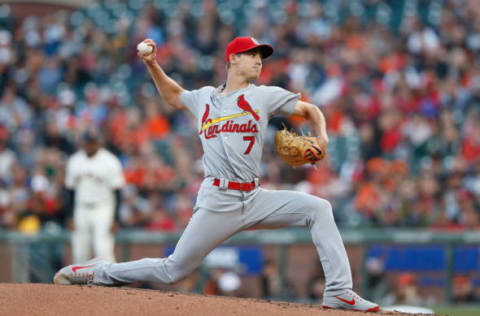
Luke Weaver
Drafted by Blue Jays: 2011 19th-round selection (589th overall)
Second Draft (as Junior): 2014 1st-round selection (27th overall) by the Cardinals
In a year that the Blue Jays were unable to sign their first-round pick, Tyler Beede, they were also unable to sign two high school arms that would one day become steady in a major league rotation. Luke Weaver is the first of those two as he was drafted in the 19th-round out of DeLand High School in Florida, and made it easy to see why it would take a lot to sign him away from the powerhouse school just an hour from his home, Florida State University (FSU).
In his first season at FSU he had the chance to pitch in the CWS, and he saw a big jump in his sophomore season with a 2.29 ERA, and also ranked 11th nationally in strikeouts, with 119. He earned a spot on the US Collegiate National Team and pitched well for them putting himself on the national radar heading into his draft year.
Another strong season as a Junior and the Cardinals took Weaver 27th-overall in 2014, and by 2016 he was considered the Cards number two prospect by MLB Pipeline. He made his debut with St. Louis in 2016, and had a respectable campaign in 2017 at the age of 23 despite only throwing 60.1 innings. He had an ERA of 3.88 and 72 strikeouts to 17 walks.
2018 wasn’t so friendly to Weaver as he posted a 4.95 ERA and saw his walk rates spike and strikeout rates drop. He was eventually moved to the bullpen and not long after, was one of the main pieces in a trade to the Diamondbacks this past December for slugging first baseman, Paul Goldschmidt.
His track record in the majors may not be as strong as some other names on this list, but Arizona will allow him every opportunity to rebound as he looks to be a long-term piece of their plan, not hitting free agency until at least 2024.
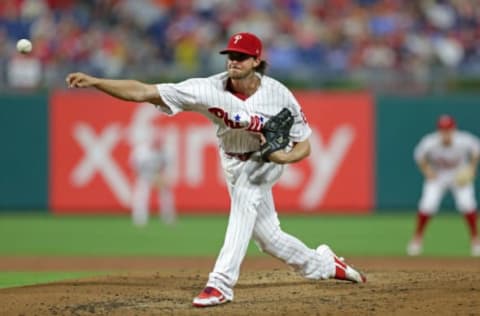
Aaron Nola
Drafted by Blue Jays: 2011 22nd-round selection (679th overall)
Second Draft (as Junior): 2014 1st-round selection (7th overall) by the Phillies
The second of the two high school arms the Jays missed out on in 2011, they quickly realized just how good Aaron Nola was when they watched him pitch at Louisiana State University (LSU) that following spring. He pitched almost 90 innings as a freshman with 89 strikeouts and a 3.61 ERA before claiming SEC pitcher of the year in his sophomore and junior years, the only player to win the award twice. In his sophomore year he went 12-1 with a 1.57 ERA and his only loss was a 2-1 decision in the CWS.
He left LSU as a First Team All-American and National Pitcher of the Year (College Baseball Foundation) leading up to the Phillies taking him with the 7th-overall pick in 2014.
In 2014, Nola was the 42nd-ranked prospect in baseball by MLB Pipeline and he quickly rose to the majors by 2015 where he had a 3.59 ERA over 13 starts. It wasn’t until 2017 that Nola showed signs of a future ace when he amassed 184 strikeouts over 168 innings and an ERA of 3.54 with a winning record despite playing for the worst team in the NL East.
The Phillies playoff push in 2018 was led by Nola as he became that ace for the Phils, being named an All-Star for the first time and an NL Cy Young finalist, finishing third in voting. His 2.37 ERA on the season was second best in the NL, and his 224 strikeouts were fifth best in the NL, both among qualified pitchers. He has been as reliable as they come over the past two years for a starting pitcher under the age of 25, as his 380.1 innings pitched are 11th best in the majors over that period of time.
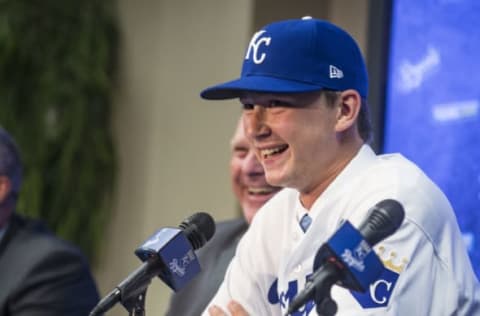
Brady Singer
Drafted by Blue Jays: 2015 2nd-round selection (56th overall)
Second Draft (as Junior): 2018 1st-round selection (18th overall) by the Royals
Probably the name on here the casual fan will know the least about because he hasn’t thrown a professional inning yet, but Brady Singer was drafted the earliest of all the players on this list the first time around by a whopping 490 selections.
This is the one the Jays may feel the most though as they made the 18-year-old right-hander an offer, but couldn’t come to terms on an agreement. Typically when draft picks go this high and don’t sign it’s due to financial reasons, but Blue Jays amateur scouting director at the time, Brian Parker, said that wasn’t the case according to Ben Nicholson-Smith.
Hailing from Eustis, Florida, Singer chose to attend college just over an hour from home, the University of Florida and with a powerhouse like the Gators to fall back on, it made the decision slightly easier.
More from Jays Journal
- Matt Chapman has been exactly what the Blue Jays needed
- Blue Jays: The goalposts are moving in the right direction
- Single-A Dunedin Blue Jays advance to the Championship Series
- Blue Jays: Comparisons for Alek Manoah’s Second Season
- Blue Jays: Adam Cimber, the unlikely decision King
He went to Florida to win and that’s just what they did during his three year tenure in Gainesville, appearing in the CWS all three seasons including a championship in 2017. That championship campaign, his second year on campus, he established himself as one of the following year’s top draft prospects, as he led the team in innings pitched (126), with 14 of those innings coming at the CWS where he secured two wins for the Gators, allowing just four earned runs and racking up 21 strikeouts. He earned a spot on the CWS All-Tournament Team and was named to the US Collegiate National Team, but turned down the invite due to his lengthened workload from the postseason.
This season, his junior year, he was 12-3 with a 2.55 ERA, 114 strikeouts to 22 walks and limited opposing batters to a .203 average across 17 starts, 13 of them quality starts. He won the Dick Howser Trophy as the best player in the country and was ranked the number two prospect heading into the draft by MLB Pipeline. The Royals took him with the 18th-overall selection, giving him a signing bonus of $4.25M, almost a million over the recommended pick value.
Some may be familiar with the story already, but he garnered national attention for what he did with that money at Christmas time this year.
He is currently Kansas City’s number one prospect and ended the 2018 campaign as the 60th in baseball, according to MLB Pipeline.
Singer has yet to throw a pitch in the Royals system as he once again pitched his Gators late into the CWS which doesn’t end until late June.
Next. Seven prospects recognized on the BA Top 100. dark
So while the Blue Jays had brought a lot of talent into their minor league system over the last few years, it could have been even better if they could have signed most of the group above.